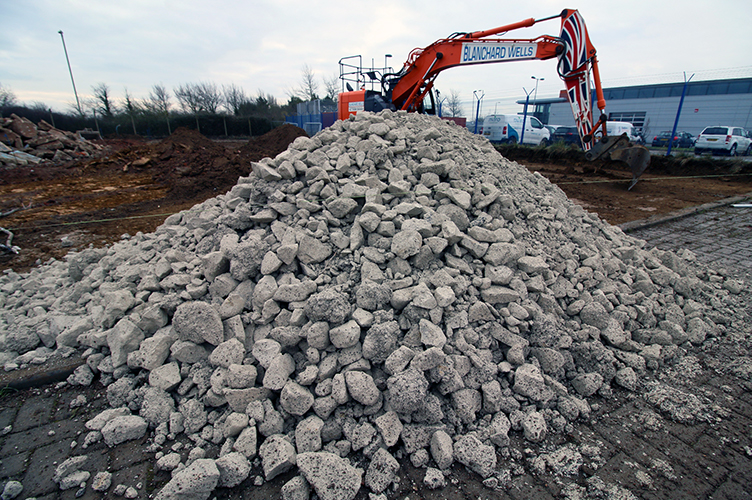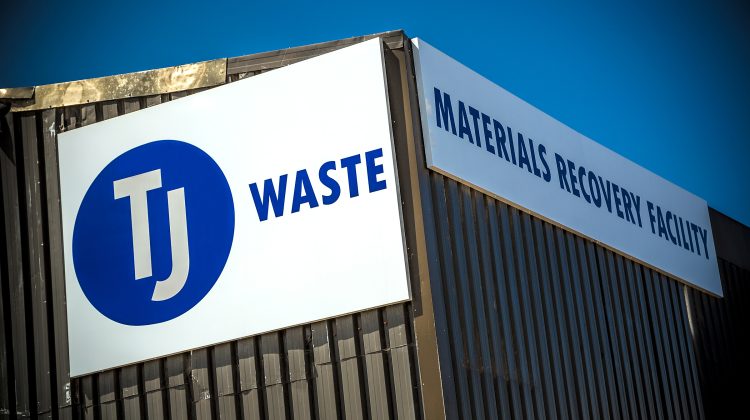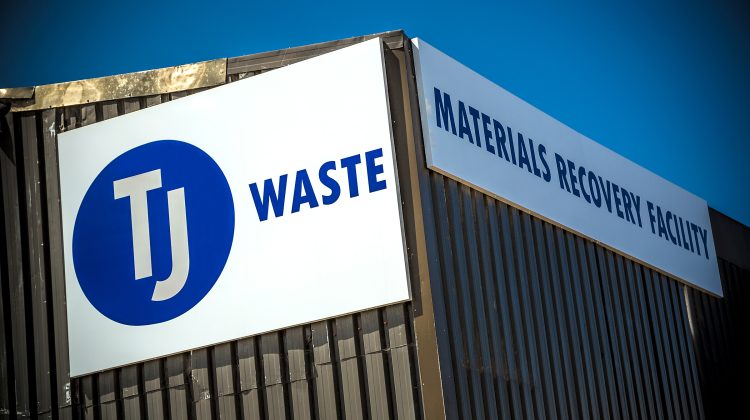All companies must have plans in place to manage their waste to ensure it is disposed of correctly. Choose TJ for your commercial waste management requirements and we’ll take care of everything.

Type 1 limestone and Type 1 crushed concrete could be used for the same purposes, mainly as sub base aggregates to be used beneath highways and construction projects of all sizes.
So what are the differences between the two materials and which one is best suited for your project? Read on to weigh up the two options and discover which you should go for…
Type 1 Limestone is classed as a primary aggregate because it comes from quarries and will not have been used before, whereas Type 1 crushed concrete is a recycled material, made largely from rubble..
Limestone can be supplied in very vast quantities so if you need large volumes of sub base aggregate, Type 1 limestone could be the perfect choice.
Although limestone is available in large quantities, there may be regional stock shortages during periods of high demand.
As limestone is a primary aggregate it is usually more expensive than its recycled alternatives. It costs more to extract limestone from the quarry than it does to make recycled crushed concrete, so if you opt for limestone, you need to be prepared to pay a bit more for it.
Type 1 crushed concrete is a recycled crushed aggregate graded to the Waste Resource and Action Plan (WRAP) protocol. TJ produces this crushed concrete from rubble obtained from construction waste they remove via their grab and tipper truck services.
How much you need and the size of your project will determine if crushed concrete is the right choice for you. If you need huge amounts, it may not be the easiest to get hold of as it relies on supply of rubble from the construction industry. How much is available will be different at any given time so you’ll have to enquire to find out if the amount you require is obtainable at the time you need it…
If you don’t require large quantities, crushed concrete is the ideal choice as it’s easy to get hold of. If the rubble has been readily available and the product has been produced, it should be easy enough to get hold of quickly.
As a recycled aggregate that is produced from materials that have already been used, the cost to make them is usually far lower than that of quarrying a primary product. This could represent a significant cost saving versus a material like Type 1 limestone, so this is something to bear in mind if the budget is tight.
There is higher demand for these aggregates in the spring, summer and autumn, when the majority of construction works requiring sub base materials take place. Likewise, this is also the time when the construction projects that generate the rubble used to make the Type 1 crushed concrete are in full force, so this is also a busy time for the production of this product. There is lower demand for aggregates in the winter time and a lower supply also – both of the recycled material and the limestone.
Chalk is a variety of limestone so it shares many of the same qualities. TJ owns Butser Quarry, near Petersfield, a rock chalk quarry, supplying materials to the construction and agricultural industries across the southern counties and beyond.
Our 6F5 (Graded) Rock Chalk is a primary general fill aggregate; supplied as an ‘as crushed’ product that is most commonly used for capping, laid over terram to raise and level natural ground ready for a Type 1 sub base.
Our rock chalk is used extensively in the construction industry as well as for other purposes such as the part it played in the World’s Largest Disaster Simulation last year and for educational purposes at Butser Ancient Farm. Read our articles and case studies to find out more.
Butser Quarry is known for its supply of rock chalk, but hadn’t been used for some years when TJ purchased it in 2017. Chalk is the strongest naturally-occuring material in Hampshire and TJ recognised its value and now utilises it in several forms – as crushed chalk, ‘as dug’ chalk, gabion rock chalk and ag lime chalk.
After acquiring the Butser site near Petersfield, TJ spent invested time getting the site ready for use. The team came up with a plan to make it operational, which they carried out. An excavation plan was put in place to ensure safe, efficient and sustainable quarrying for years to come.
We supply a range of aggregates for delivery or collection in 5-29 tonne loads. Find out more about Type 1 limestone, Type 1 crushed concrete and the other aggregates we offer. You can even get an instant online quote for your required aggregate or give us a call on 08000 463 964 if you wish to discuss your requirements.

All companies must have plans in place to manage their waste to ensure it is disposed of correctly. Choose TJ for your commercial waste management requirements and we’ll take care of everything.

With more and more companies striving to achieve carbon-neutral status, it’s your responsibility to recycle as much as you can. Check out our top tips for making your business more eco friendly…

Trust TJ to take care of your hazardous waste; we’re experts in this area and can facilitate the transfer of these materials to a safe and appropriate facility for dismantling, reuse and disposal.
Change your stored postcode to update prices for your location.